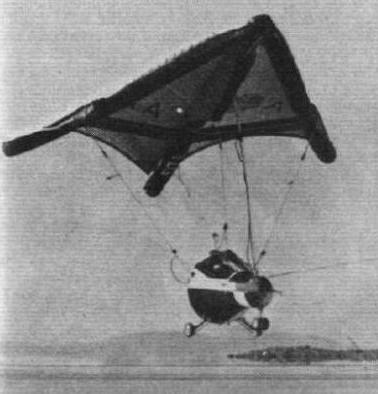The history of microlight flying is a tale of innovation, passion, and the pursuit of flight enthusiasts to conquer the skies. From its humble beginnings to the modern marvels of engineering, microlights have evolved into a popular recreational activity worldwide.
In this article, we will delve into the origins, advancements, and remarkable milestones that shaped the history of microlight flying.
Origins and Pioneers
The roots of microlight flying can be traced back to NASA’s space flight program. It was during the 1960s that a NASA research scientist named Francis Rogallo designed a collapsible delta wing for the space shuttles’ safe return to Earth.

Although NASA didn’t pursue his proposal, aviation enthusiasts recognised the potential of the Rogallo wing for leisure flying. This led to the development of the first delta wing glider and the birth of the sport of hang gliding, which quickly gained popularity globally.
The Birth of Microlights in Australia
In the early 1970s, Australian hang gliding pioneers began experimenting with ways to attach power units to their wings. Their goal was to take off without the need to climb hills before gliding. These early experiments paved the way for the birth of modern flexwing microlights.
Over time, wing and airframe/engine technology rapidly advanced, leading to the creation of factory-manufactured microlights in Australia.
Advancements in Aircraft Technology
The development of microlights wouldn’t have been possible without significant advancements in aircraft technology. Manufacturers like Airborne Windsports Pty Ltd, based in Newcastle, NSW, have played a vital role in revolutionising the industry globally, opening up thrilling opportunities for microlight flying in extraordinary destinations like Victoria Falls, Zimbabwe, to name one!

Design and Safety Regulations
Today’s microlights are the result of years of design improvements within a framework of stringent safety regulations administered. The microlight’s design incorporates a large, high-lift wing, ensuring safe gliding to the ground in the event of engine malfunction. Despite their fragile appearance, modern microlights are incredibly strong and boast one of the best safety records in leisure aviation.
Structural load tests up to 6g are conducted to ensure the durability and safety of these aircraft. Each microlight must pass inspection and flight tests before being deemed airworthy.
The Future of Microlight Flying
As technology continues to advance, the future of microlight flying holds exciting possibilities. Ongoing research and development aim to enhance performance, safety features, and fuel efficiency of these aircrafts. Innovations in engine technology, including improved reliability and fuel efficiency, contribute to the continuous improvement of these aircraft.
Stringent regulations and safety standards will remain crucial to ensure the continued growth and sustainability of microlight flying. Aviation organisations play a vital role in maintaining and updating these regulations to guarantee the safety of pilots and passengers.
Author’s Closing Thoughts
The history of microlight flying is a testament to human ingenuity and the relentless pursuit of flight. From its origins in NASA’s space flight program to the present-day advancements in design, technology, and safety regulations, microlights have become a symbol of freedom and adventure in the skies. As pilots and enthusiasts continue to push the boundaries and explore new horizons, microlight flying will undoubtedly evolve, promising even more exhilarating experiences for generations to come.
The role of the pilot in microlight flying cannot be understated. Pilots are at the heart of the experience, responsible for controlling the aircraft, managing weight and balance, and making critical decisions in various weather conditions. With their skills and expertise, pilots navigate the skies, enjoying the thrill of speed and maneuverability that microlight aircraft offer.
Microlights and ultralights, with their minimum weight and simplified controls, provide a unique and accessible avenue for recreational flying. These lightweight aircraft offer a sense of freedom and adventure, allowing you to soar through the air with unparalleled joy and excitement while experiencing incredible views.
In this dynamic and ever-evolving field, microlight flying will continue to captivate individuals seeking a thrilling and unforgettable experience. So why not give it a try now!?
